Some Practical Questions with Images - Exploring Forces | Science Curiosity Class 8 - New NCERT PDF Download
Question 1: Give two examples each of situations in which you push or pull to change the state of motion of objects.
Answer:
1. Opening or shutting a door
2. A cricket ball hit by a batsman
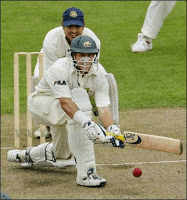 A Batsman
A Batsman
Question 2. Give two examples of situations in which applied force causes a change in the shape of an object.
Answer:
1. Rolling a ball of flour dough for making a chapati at home
2. Bursting of an inflated balloon by pressing between the palms.
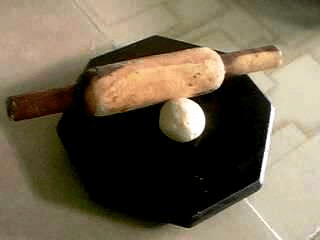 Rolled ball of flour for making Chapati
Rolled ball of flour for making Chapati
(a) To draw water from a well we have to apply the force of pull at the rope.
(b) A charged body attracts or pulls an uncharged body towards it.
(c) To move a loaded trolley we have to either pull it or push it.
(d) The north pole of a magnet repels the north pole of another magnet.
muscular, contact, non-contact, gravity, friction, shape, attraction
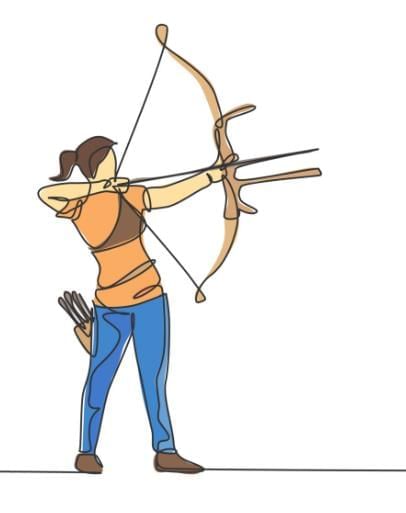 (a) To stretch the bow, the archer applies a force that causes a change in its shape.
(a) To stretch the bow, the archer applies a force that causes a change in its shape.
(b) The force applied by the archer to stretch the bow is an example of muscular force.
(c) The type of force responsible for a change in the state of motion of the arrow is an example of a contact force.
(d) While the arrow moves towards its target, the forces acting on it are due to gravity and that due to friction of air.
Question 5. In the following situations identify the agent exerting the force and the object on which it acts. State the effect of the force in each case.
(a) Squeezing a piece of lemon between the fingers to extract its juice.
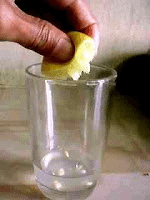
(b) Taking out paste from a toothpaste tube.
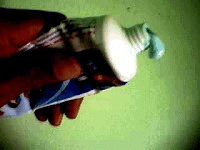
(c) A load suspended from a spring while its other end is on a hook fixed to a wall.
(d) An athlete making a high jump to clear the bar at a certain height.
Answer:
Situation | Agent | Object | Effect |
(a) Squeezing a piece of lemon between the fingers to extract its juice. | Muscular Force of Fingers | Lemon Outer Surface | Shape of the piece of lemon gets changed and juice gets extracted. |
(b) Taking out paste from a toothpaste tube. | Muscular Force of Fingers | Wall of Tube and Paste | Shape of the tube gets changed on pressing and paste is squeezed out. |
(c) A load suspended from a spring while its other end is on a hook fixed to a wall. | Weight of load by Force of Gravity | Spring | As the other end of the spring is fixed to wall, so the spring will expand downward. |
(d) An athlete making a high jump to clear the bar at a certain height. | Muscular Force | Weight of athlete (Force of Gravity) | The athlete is able to lift his weight to jump across the bar at certain height |
Question 6. A blacksmith hammers a hot piece of iron while making a tool. How does the force due to hammering affect the piece of iron?
Answer: When A blacksmith hammers a hot piece of iron while making a tool, its shape gets changed into a desired shape of tool.
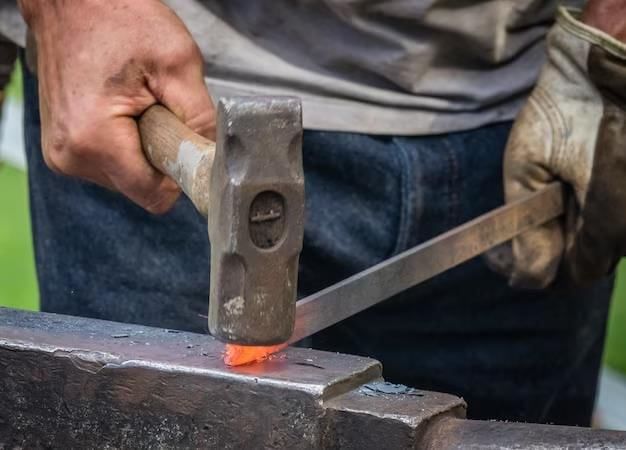 Blacksmith hammering a hot piece of Iron
Blacksmith hammering a hot piece of Iron
Question 7. An inflated balloon was pressed against a wall after it has been rubbed with a piece of synthetic cloth. It was found that the balloon sticks to the wall. What force might be responsible for the attraction between the balloon and the wall?
Answer: When we rub, an inflated balloon with a piece of synthetic cloth, its surface gets charged due to electrostatic force. On pressing it against a wall, the charged surface of balloon, due to electrostatic force, attracts uncharged surface of the wall and the balloon sticks to the wall.
Balloon held by Electrostatic Force
Question 8. Name the forces acting on a plastic bucket containing water held above ground level in your hand. Discuss why the forces acting on the bucket do not bring a change in its state of motion.
Answer: The forces acting on a plastic bucket containing water held above ground level are:
- Muscular Force: This is the force exerted by your muscles to lift the bucket.
- Gravitational Force: This is the weight of the bucket and water, acting downwards.
These forces do not change the bucket's state of motion because:
- The muscular force pulling upwards is balanced by the gravitational force pulling downwards.
- As a result, the net force acting on the bucket is zero, keeping it in a state of equilibrium.
Question 9. A rocket has been fired upwards to launch a satellite in its orbit. Name the two forces acting on the rocket immediately after leaving the launching pad.
Answer: When a rocket is launched to send a satellite into orbit, two main forces act on it immediately after it leaves the launch pad:
- Weight of the rocket: This is the combined weight of the rocket and its payload (the satellite), which is caused by the force of gravity. This force acts downwards towards the centre of the Earth.
- Thrust force: This is generated by the burning of propellant fuel in the rocket. The thrust force acts in the opposite direction to gravity, allowing the rocket to move upwards.
Rocket launching.
|
59 videos|236 docs|13 tests
|
FAQs on Some Practical Questions with Images - Exploring Forces - Science Curiosity Class 8 - New NCERT
| 1. What are the different types of forces that act on an object? |  |
| 2. How does friction affect motion? |  |
| 3. What is Newton's First Law of Motion? |  |
| 4. What is the role of gravity in everyday life? |  |
| 5. How can we demonstrate the concept of forces using simple experiments? |  |
















